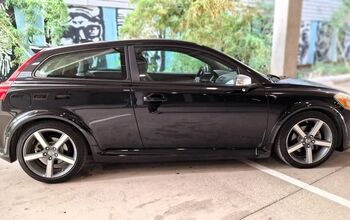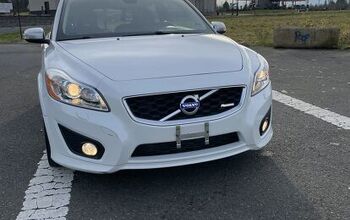NHTSA Data Dive 2: UA Rates 1990 – 2009 By Manufacturer [Updated With New Charts]

TTAC’s attempt to correlate NHTSA data with sales to generate a UA complaint rate was the first, even if it was flawed. Others have now waded into the 776,482 lines of data available from NHTSA (anybody need something to do?), and while their efforts are admirable, they’re not yet good enough. UA rates by maker or brand fail to show how different the UA rate is for certain models, which is essential in tracking down the issue. The UA problem is not a make-specific problem generally, but a model specific one. More on that when we revisit that with updated stats.
NPR has come up with a data base that correlates UA by model year (MY), manufacturer, and the rate per 100k cars sold, from 1990 through 2009. It’s all here. I’ve taken a couple of key lines of that for the following chart, comparing Toyota’s rate to Ford’s, which has had a fairly consistently highest rate among the biggest manufacturers, and also picked the highest rate per maker for each year, not including any below five complaints due to the low margin of error:
It clearly shows that Toyota’s UA rate took a jump in the 2002 MY. Until we have some model specific info, we’ll have to guess as to why. It also shows that Ford’s average rate is almost as high as Toyota, but has dropped substantially in the last couple of years (we have a theory for that, coming in a later post). It’s also quite obvious that Toyota’s rate is not very high in comparison to the worst offenders.
[Update: Commentator david42 has made two additional charts from this data, showing accelerator events and all type of vehicle speed incidents. Thanks!]

More by Paul Niedermeyer
Latest Car Reviews
Read moreLatest Product Reviews
Read moreRecent Comments
- KOKing I thought they quit making it 3yrs ago so... no?
- TheEndlessEnigma Hybrids and PHEVs make sense, EV's do not.
- Ajla My understanding is that the 5 and 7-Series cater almost exclusively to the Chinese market and they sell them here just so they don't look weak against Mercedes and Audi.
- EBFlex Interesting. We are told there is insatiable demand for EVs yet here is another major manufacturer pivoting away from EV manufacturing and going to hybrid. Did these manufacturers finally realize that the government lied to them and that consumers really don’t want EVs?
- Kwik_Shift_Pro4X What's worse than a Malibu?




































Comments
Join the conversation
A big difference in pedal behavior happens with Drive By Wire systems on cruise control: the old way used an electric or vacuum-operated servo to control the throttle, which was mechanically linked to the accelerator pedal. As the car traveled up up and down hills, the accelerator would magically move as the system added or reduced power demands. With DBW, there is no physical connection between pedal and engine, nor is any needed. The servo on the throttle operates under computer control, so the driver doesn't feel any invisible foot operating the pedal for him. If the system works as intended (this may be where Toyota's problem arises…) there is less chance of the throttle hanging up in a particular position due to a sticky cable or linkage.
I never thought of cell phone users being distracted, but it could be part of the answer. I have lost count of how many times knuckle dragging sub moronic imbeciles have nearly driven into me while incessantly blabbing on their damndable cell phones. I suspect it'd be near impossible to figure out rates of UA parsed out by levels of cell phone use while driving. One thing I have noticed; people younger than about 25 get straight in my face and defend their "right" to blab incessantly on their phones when I speak about how bad a practice it is. They're not even willing to pretend that they don't do it and lie. Quite the opposite; they try to put me on the defensive for stopping THEM from what THEY want to do, even it if can demonstrably be proven that it's a dangerous activity. Blatant selfishness. If I didn't know better, I'd say they were human beings acting in the way that most do.... (sarcasm).